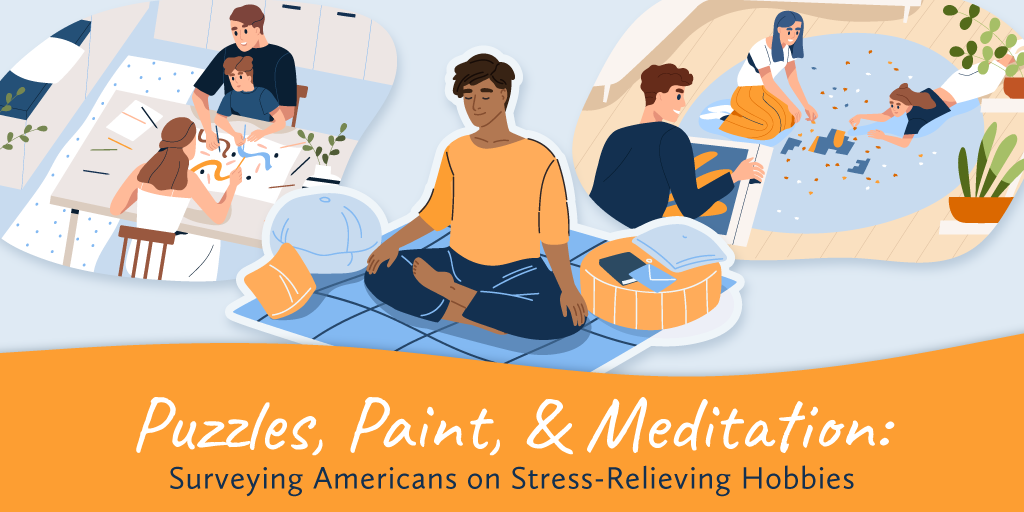As individuals and businesses hunkered down last year during the chaos of COVID, Americans sought creative outlets for managing their stress levels. Jigsaw puzzling, along with other stress-relieving hobbies like baking, gardening, and meditation emerged as popular ways to keep minds occupied and at ease during a worldwide pandemic.
Search volume for jigsaw puzzles hit an all-time high in 2020 as hoards of quarantined consumers turned to puzzles as a form of escape from global circumstances. What’s more, Americans got crafty to cope with stress. In-demand pastimes like DIY projects, woodworking, and painting also saw an enormous up-tick—welcome back, Bob Ross. Health and wellness categories were no exception. Nothing can tear us apart from the virtual yoga classes, Peloton memberships, and guided meditations that we now hold so dear.
Halfway into 2021, these stress-relieving hobbies continue to be relevant but for different reasons. With the world reopening and employees returning to the office, new stressors exist for adults, young and old, as we assimilate back to “life as it was”. So what are the stress-relieving hobbies of choice and how have they impacted our collective sense of balance?
To find out, Bits & Pieces went straight to the source, surveying over 1,000 consumers across the U.S. to uncover their largest sources of anxiety and how they manage their day-to-day stress. Insights found were analyzed by gender, generation, and industry of employment. Read on to see the full survey results!
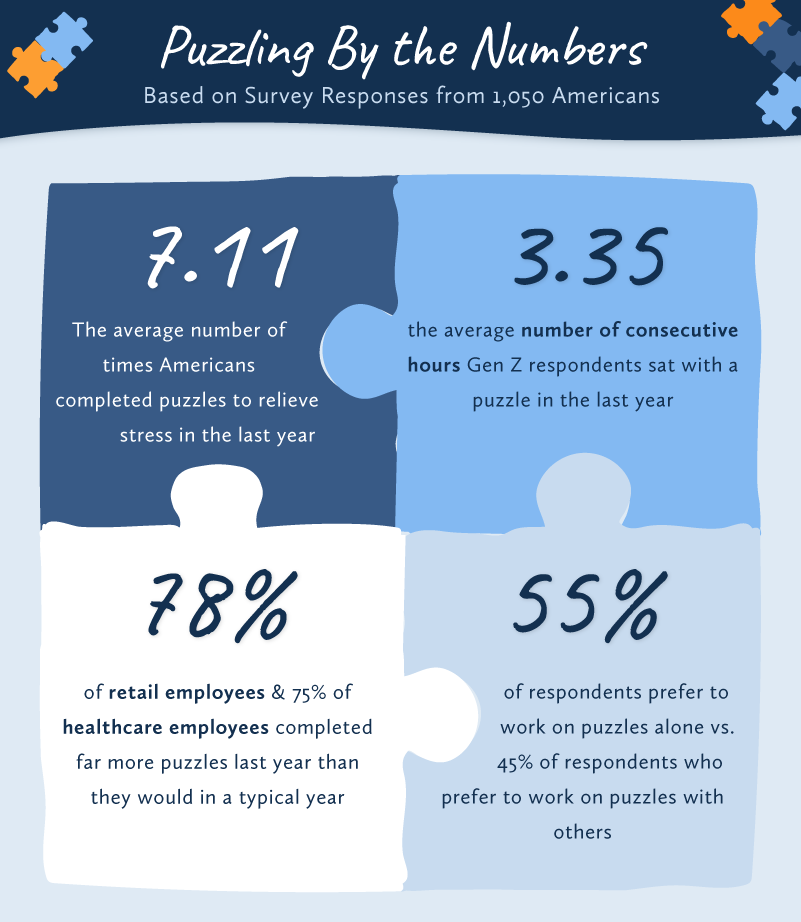
We can all relate to digging into a 1,000 piece jigsaw of a larger-than-life landscape with a complete inability to walk away. Nothing can break our focus or deter us from the overriding task at hand. This sentiment rang true for our survey respondents as well. When asked how many consecutive hours they have sat with a puzzle in the last year, respondents as a whole say 2.95 hours on average. Gen Z respondents, in particular, ages 18-24, puzzled for 3.35 consecutive hours on average in the last year—a longer period of time solving puzzles than any other generation. America’s youth is dedicated!
60% of respondents say they worked on more jigsaw puzzles this past year during the pandemic (7.11 puzzles on average) than they would in a typical year simply because they had more free time during quarantine. When we zoom in on respondents employed within specific industries, retail, healthcare, and government employees were the respondents who completed puzzles more frequently to alleviate stress.
Why Do People Puzzle & How Often?
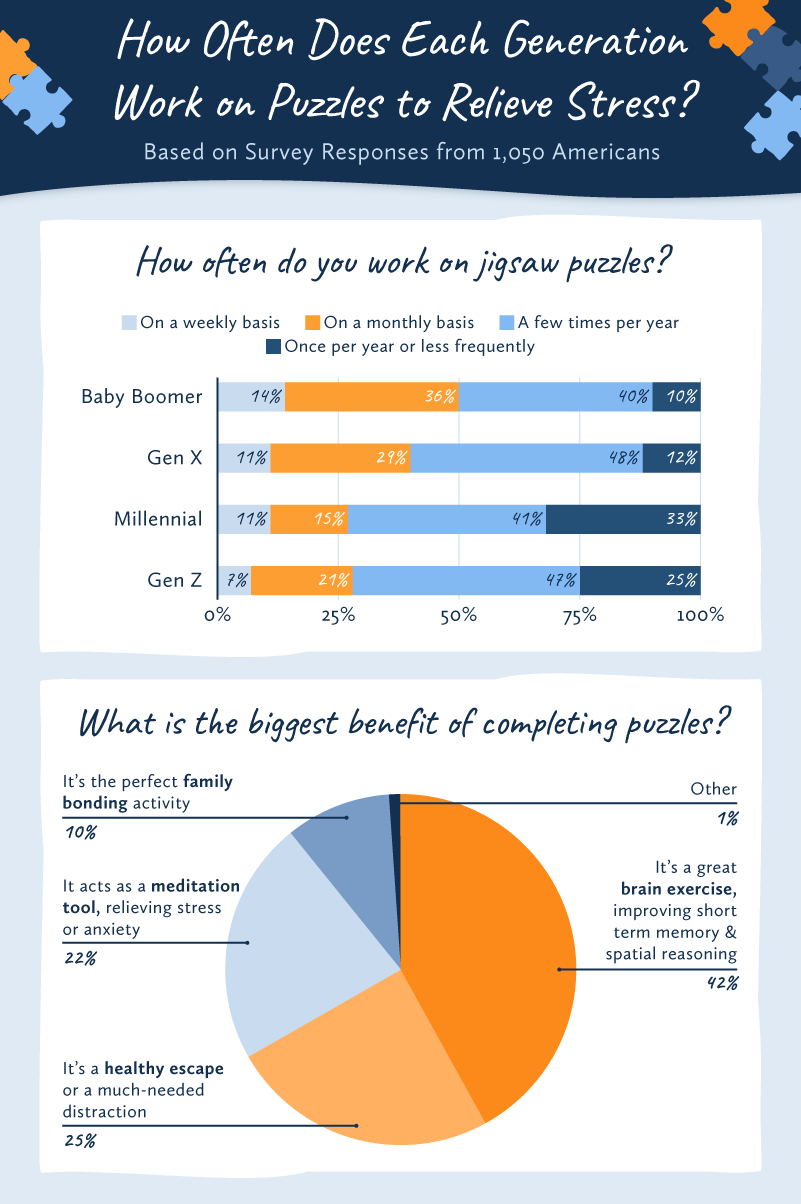
When it comes to puzzling cadence, baby boomers take the cake. A surprising 40% of baby boomers work on puzzles a few times per year, while 36% complete them on a monthly basis. What’s more, 14% of devoted boomers even complete puzzles on a weekly basis—the real MVPs (Most Valuable Puzzlers).
What’s the best part about puzzling? The majority say it keeps the mind limber. 42% of survey respondents say it’s an excellent brain exercise, improving both short-term memory and spatial reasoning. Playing Sudoku and other brain teasers can facilitate the left side of the brain (which oversees language and reasoning), whereas completing jigsaw puzzles “bolsters the right hemisphere of our brain, which controls visual skills and orientation,” according to the Guardian.
Other respondents (25%) say the biggest perk of puzzling is that it’s a healthy escape, and 22% of respondents say it acts as a meditation tool. You’ll hear no arguments from us! Puzzling helps us stay in the present moment and shut down racing thoughts. Some nights a glass of cabernet, background tunes, and our favorite puzzle can be the perfect antidote.
Puzzling As a Form of Escape & Self-Care
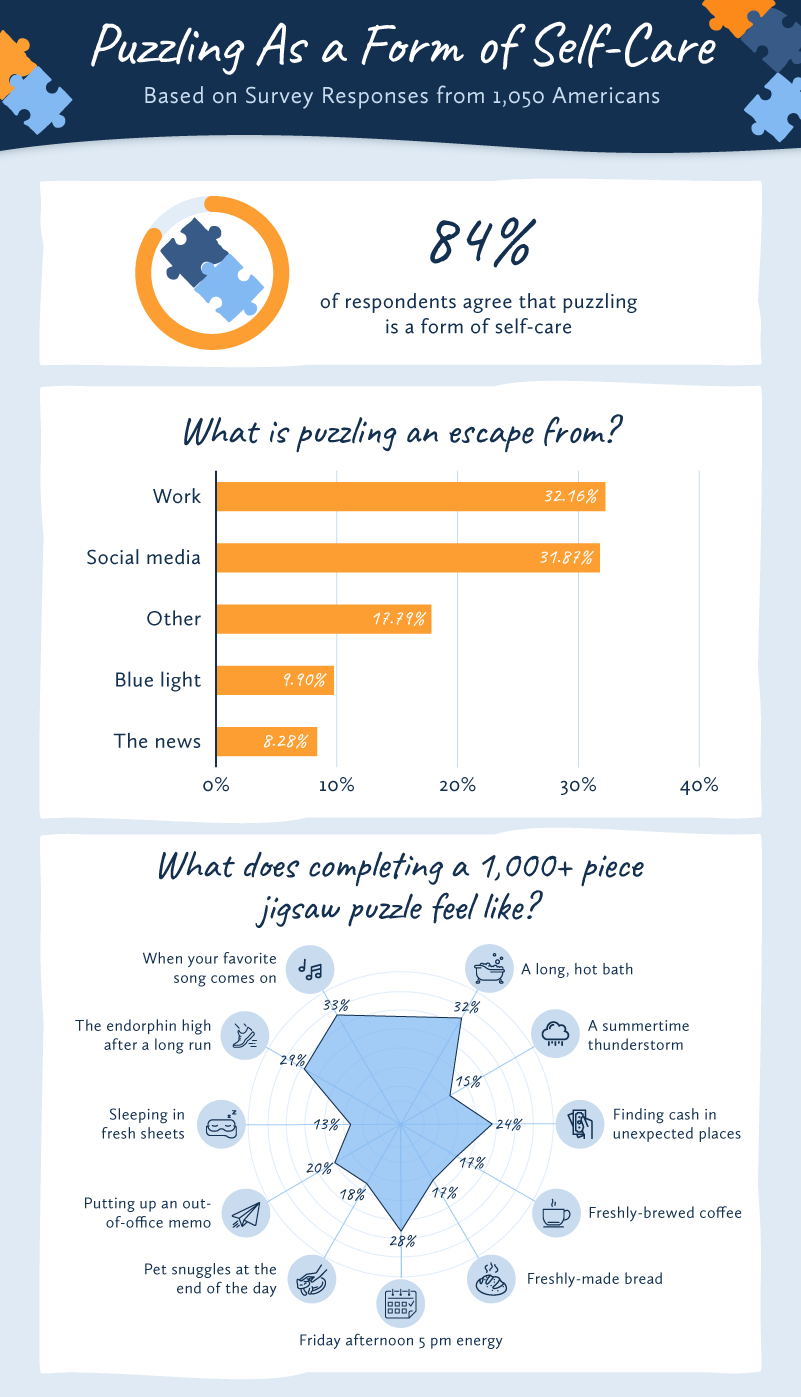
In 2021, self-care comes in all forms—mental health days, a three-mile run, a Netflix binge, among countless others. Puzzling certainly joins the ranks of self-care activities as 84% of respondents agree that puzzling is a form of self-care.
Some seek puzzles for entertainment, others for education, but many turn to them for a much-needed escape. Our study found that 32% of respondents say puzzling is an escape from work, while another 32% say it’s an escape from social media. These findings make a lot of sense, given our widespread adoption of a 50+ hour work week and our skyrocketing social media use, with some checking their social channels 20+ times per day.
Daily Stress Level of the Average American
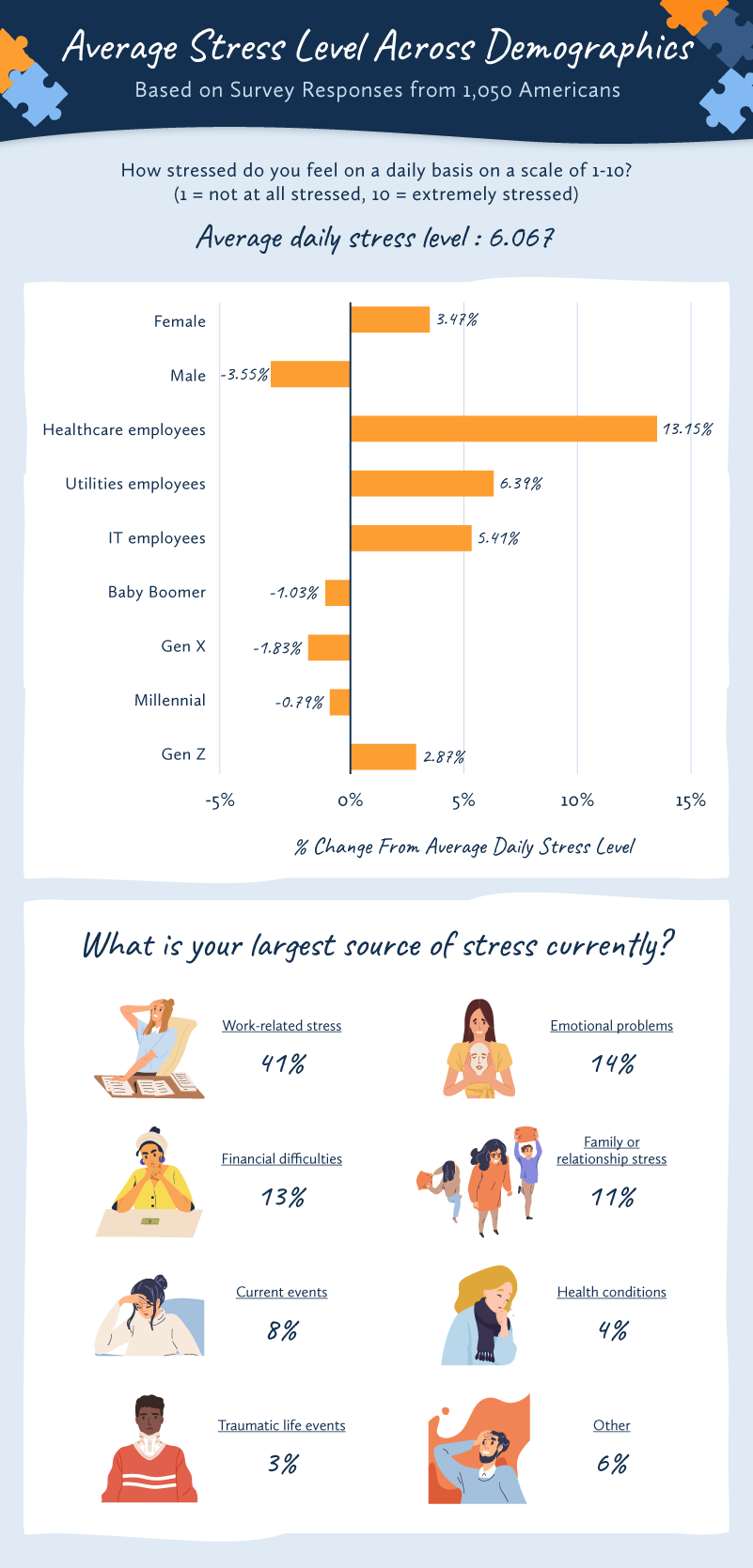
In addition to puzzling for stress-relief, we wanted to learn the most pervasive sources of stress as well as stress level in general across three demographic groups – gender, generation, and industry. We asked respondents to rate their daily stress level on a scale of 1-10 (where 1 = not at all stressed and 10 = extremely stressed).
Respondents reported a rating of 6.1 on average. Females and Gen Z respondents reported daily stress levels that were 3.5% and 2.9% above the average. With a rating of 6.9, healthcare employees reported daily stress levels that surpassed the average by 13%. Utilities and IT employees also report above-average stress levels. The largest portion of respondents by far (41%) say this daily stress originates from work.
Preferred Hobbies for Stress-Relief
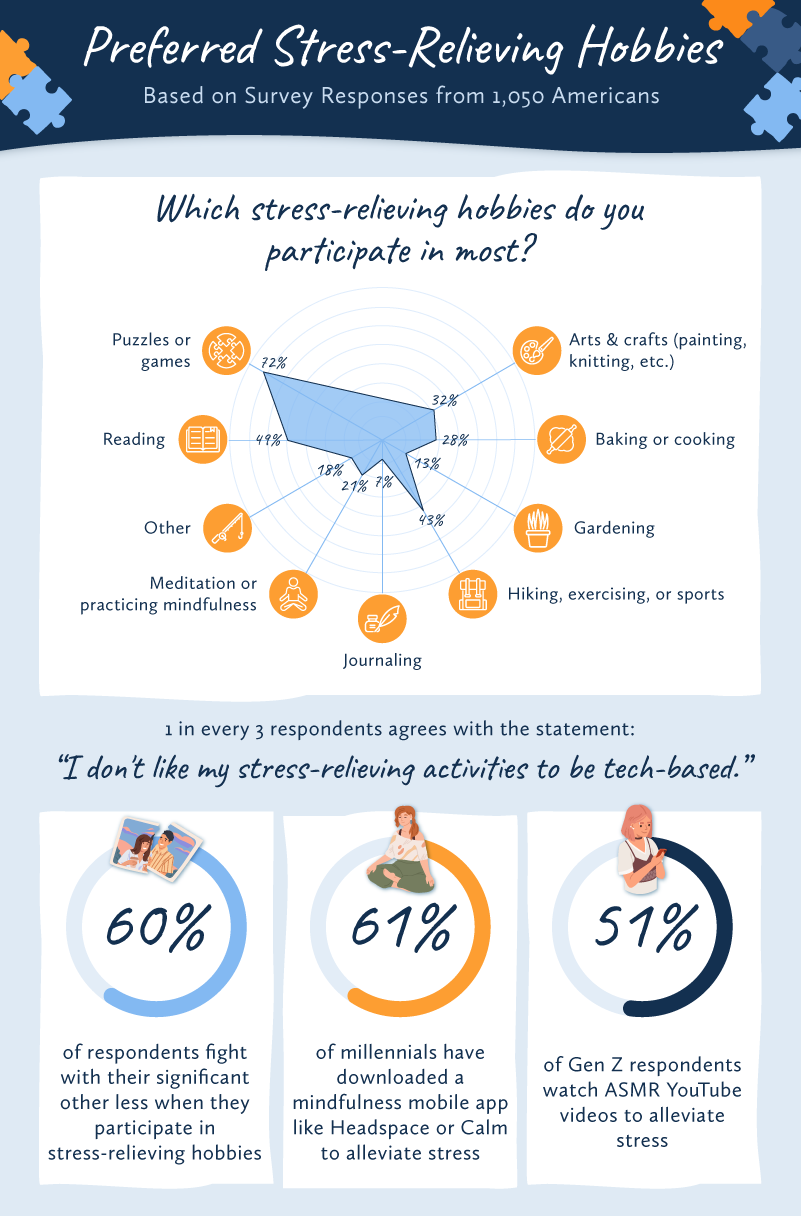
Which are the stress-relieving hobbies of choice? 72% of respondents say puzzles and games are their favorite ways to alleviate stress, followed by reading (49%), and hiking or exercising (43%). We all have unique ways of rising above our anxiety. Some prefer those ways to be tech-based, while others prefer a digital detox. 61% of millennials have downloaded a mindfulness mobile app like Headspace or Calm to keep their stress in check, while 51% of Gen Z respondents watch ASMR YouTube videos to help them relax. One in every three respondents overall (and 41% of baby boomers specifically) prefer their stress-relieving activities to be away from technology altogether.
No matter which hobbies Americans choose to take on, most can testify to the benefits. 60% of respondents agree that stress-relieving hobbies improve their productivity and confidence, while 54% agree that they reduce employee burnout from work-related stress.
How Many Hours Per Week Are Dedicated to Stress-Relief?
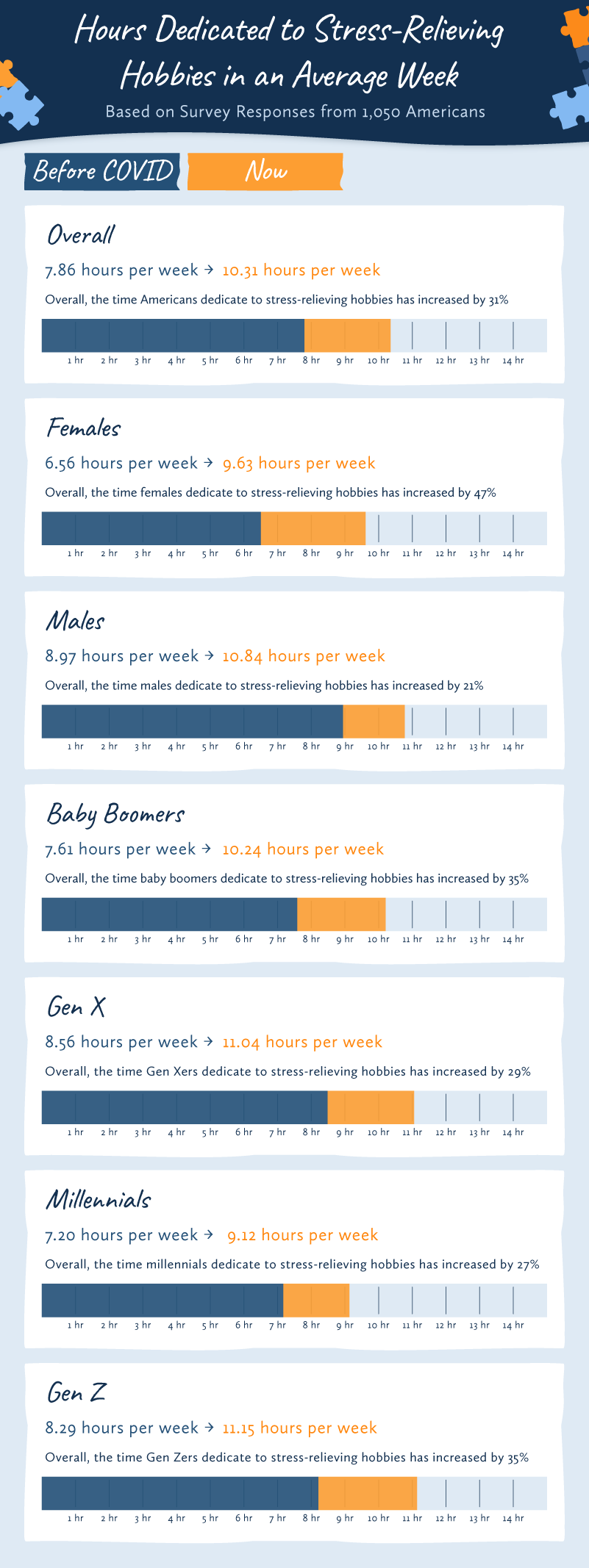
Carving out time for stress-relieving hobbies each week is paramount to managing stress, reducing burnout, and finding balance. We asked respondents how many hours they dedicate to these activities on a weekly basis both before and after COVID. Overall, time dedicated to stress-relieving hobbies has increased by 31% between 2019 and 2021. Where Americans used to spend 7.86 hours per week on activities like gardening, exercising, and playing guitar, they now spend 10.31 hours per week. Females, baby boomers, and Gen Z respondents are prioritizing anxiety-reducing hobbies more than anyone else, according to the growth rates in the graphs above.
Wrap-Up
How Americans spend their time and manage their stress will likely never be the same post-COVID. We can only hope that people will continue to prioritize the physical and mental health of both themselves and their loved ones as the world is reopening.
Bits And Pieces has been supplying millions of adults and kids alike with unique jigsaw puzzles, brain teaser puzzles, and gift ideas through our mail order catalog since 1983. Shop our collection of original jigsaw puzzles online or sign up for our catalog!

